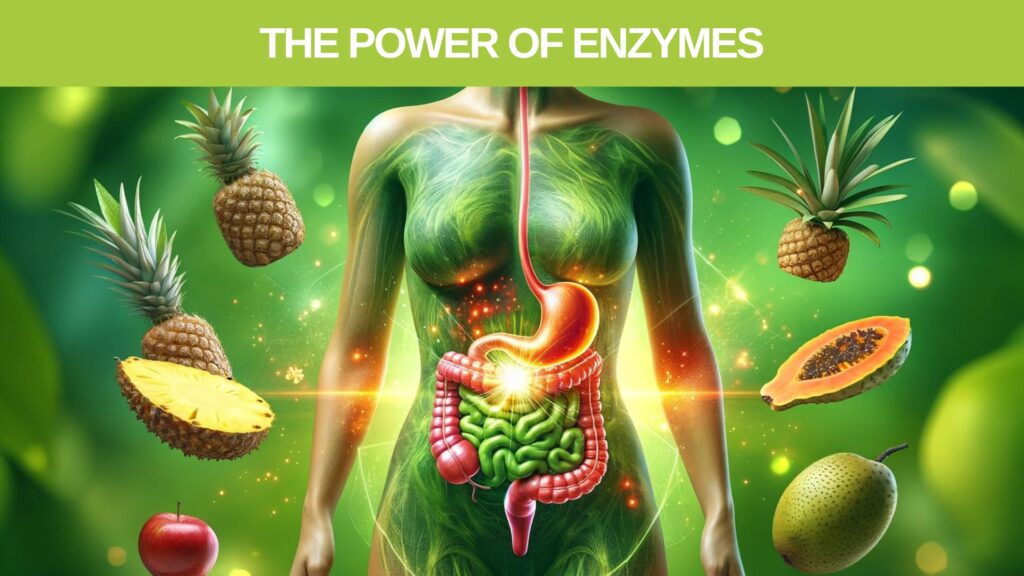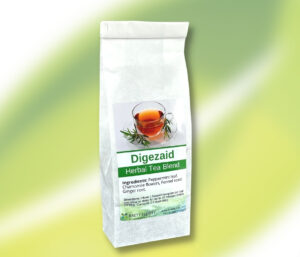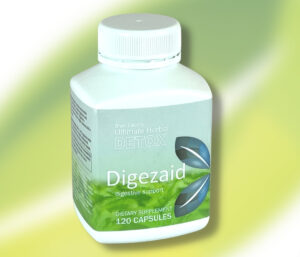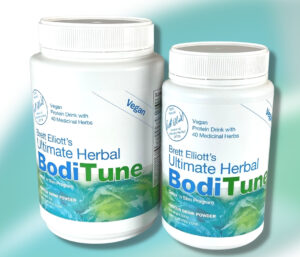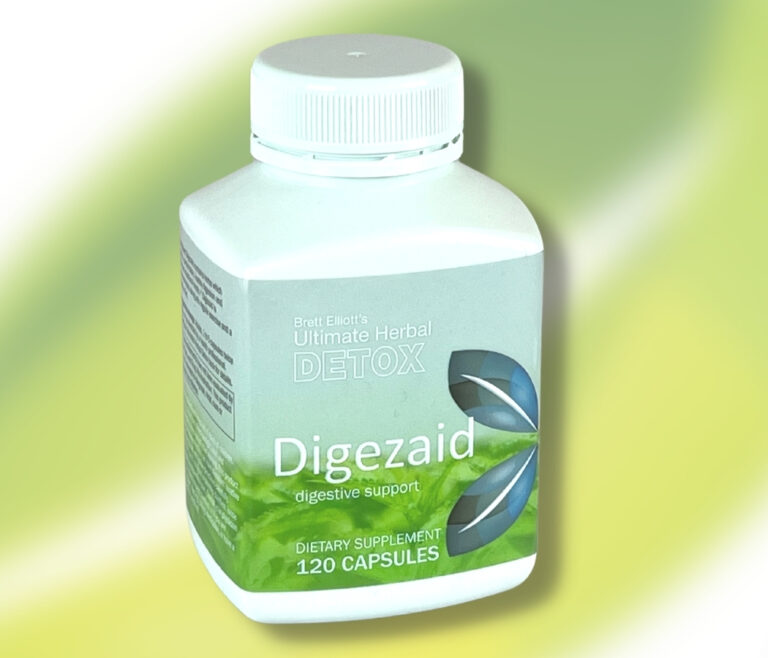- 6 months ago
- 17Minutes
- 4863Words
- 901Views
Too often misunderstood, digestive enzymes have such an important role in sustaining life that I thought I should clarify a couple of myths.
- What are Digestive Enzymes
- Digestion Simplified
- What Triggers indigestion
- Digestive Enzymes Explored
- Enzymes for Lactose Intolerance
- Enzymes in Food
- Enzyme Supplements
Click the topics to skip to the answers below
(1) Examination of small bowel enzymes in chronic diarrhea. PUBMED https://www.ncbi.nlm.nih.gov/pubmed/12519224
(2) [Lactose tolerance and milk consumption: myths and realities]. PUBMED https://www.ncbi.nlm.nih.gov/pubmed/3155250
(3) Gastric Re-acidification with Betaine HCl in Healthy Volunteers with Rabeprazole-Induced Hypochlorhydria. PUBMED https://www.ncbi.nlm.nih.gov/pmc/articles/PMC3946491/
(4) Pepsin Biochemistry. Encyclopedia Britannica. https://www.britannica.com/science/pepsin
(5) Advanced glycation End-products (AGEs): an emerging concern for processed food industries. PUBMED https://www.ncbi.nlm.nih.gov/pmc/articles/PMC4648888/
(6) Factors affecting adherence to a raw vegan diet. PUBMED https://www.ncbi.nlm.nih.gov/pmc/articles/PMC3635096/
(7) Gut bacteria are what we eat. The Scientist. https://www.the-scientist.com/the-nutshell/gut-bacteria-are-what-we-eat-43383
(8) Different Types of Enzymes. https://sciencing.com/different-types-enzymes-4968363.html
(9) The evidence of proteases in sprouted seeds and their application for animal protein digestion. PUBMED https://www.ncbi.nlm.nih.gov/pmc/articles/PMC5908832/
(10) Enzyme therapy for functional bowel disease-like post-prandial distress. PUBMED https://www.ncbi.nlm.nih.gov/pmc/articles/PMC6910206/
(11) Mechanisms of Disease: protease functions in intestinal mucosal pathobiology. PUBMED https://www.ncbi.nlm.nih.gov/pmc/articles/PMC3049113/
(12) Scientific Opinion on the substantiation of health claims related to live yoghurt cultures and improved lactose digestion.
https://efsa.onlinelibrary.wiley.com/doi/10.2903/j.efsa.2010.1763
(13) Potential role of bromelain in clinical and therapeutic applications Biomedical Reports
(14) Harvard Health Publishing.
(15) HMF and diastase activity in honeys: A fully validated approach and a chemometric analysis for identification of honey freshness and adulteration Food Chemistry.
(16) Antioxidant and Antihyperglycemic Properties of Three Banana Cultivars (Musa spp.) Scientifica.
(17) Peptide profiling of bovine kefir reveals 236 unique peptides released from caseins during its production by starter culture or kefir grains. PUBMED https://pubmed.ncbi.nlm.nih.gov/25613046/
(18) The Use of Medium-Chain Triglycerides in Gastrointestinal Disorders. https://med.virginia.edu/ginutrition/wp-content/uploads/sites/199/2014/06/Parrish-February-17.pdf
(19) Health benefits of kimchi (Korean fermented vegetables) as a probiotic food. https://pubmed.ncbi.nlm.nih.gov/24456350/
(20) Potential of garlic (Allium sativum) in lowering high blood pressure: mechanisms of action and clinical relevance. https://www.ncbi.nlm.nih.gov/pmc/articles/PMC4266250/
Digestive Enzymes Make Things Go
When you think of an enzyme you might think of Pacman running around gobbling things up. In fact, an enzyme is a protein molecule that acts as a lubricant (or catalyst) helping speed up chemical reactions.
A Million Times Faster?
Without enzymatic activity, life would be impossible because crucial reactions would be millions to billions of times slower without their lubricating catalytic effect.
2,000 Different Enzymes
There are many different types of enzymes, which are highly specific to the substances they catalyze, and enzymes aid every metabolic function in the body. In fact, there are over 2,000 different enzymes at work in the human body, many of which come from food. (8)
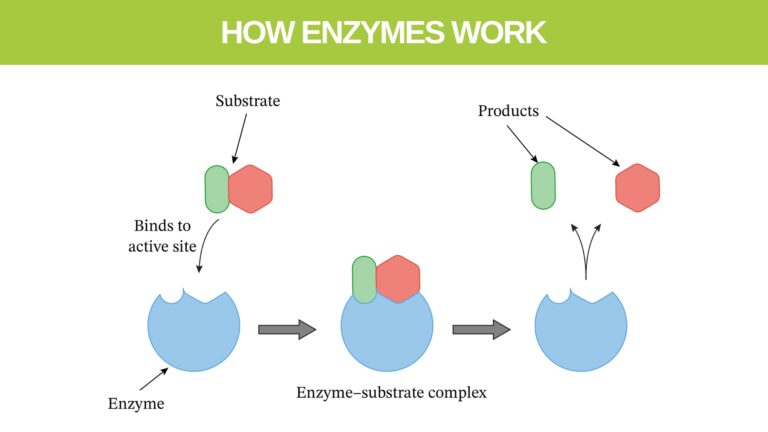
Enzymes and Disease
Digestive enzymes pool in the body and can become deficient. There is growing evidence that intestinal enzymes have a role in the pathogenesis of gastrointestinal inflammatory, autoimmune and neoplastic diseases; however, our current understanding of the impact of proteases on gastrointestinal pathophysiology is far from complete. (11)
Gastrointestinal symptoms such as diarrhea, abdominal distension, flatulence, bloating and a feeling of fullness are common complaints of often unknown causes. There is a long history of trials reporting the successful use of products containing a variety of combinations of digestive enzymes including a number of randomized placebo-controlled trials. (10)
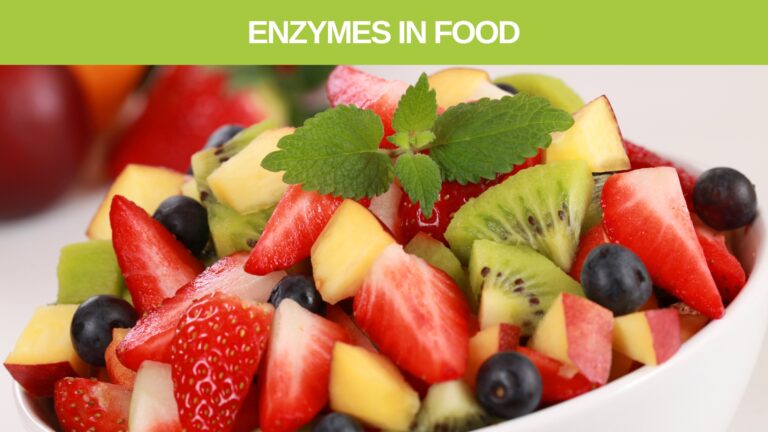
Where do enzymes come from?
Many enzymes are produced by our body whereas other enzymes are provided by the food we eat.
Only raw foods contain food enzymes e.g. fruit and vegetables. Modern-day factory processing methods such as pasteurizing, chemically altering, canning, and preserving destroy the enzymatic breakdown of our food. (5)
Without enzymes, there is no life and where there is no life in food there are no enzymes present. This is something worth remembering when choosing the types of food you eat. We will talk about this further soon, but first we explore the functions of the various enzymes involved in digestion. What is a digestive enzyme?- An enzyme is a substance that breaks the bonds between food molecules.
- Enzymes have a major involvement in some of the main processes performed by the digestive system.

The 6 Main Processes Of Digestion
Let’s step back and take a brief look at an overview of the entire digestive process.
- First, we have ingestion (the eating of food).
- Next is propulsion, which is the process by which food is moved along the digestive tract.
- Mechanical digestion describes the physical breakdown of food into smaller particles. It involves the first obvious mechanism of chewing, followed by churning in the stomach and then moving through the segments of the small intestine. This physical (mechanical) breakdown of food would only do a fraction of the job without the aid of chemical digestion.
- Chemical digestion This is where enzymes step in. The chemicals used in chemical digestion are enzymes and acids made by the body. Once the food is broken down into molecules, the next part of the digestive process takes place.
- Absorption is when nutrients pass through the intestinal wall into the bloodstream and lymph, ready for transport to the cells and tissues of the body.
- Last but not least comes elimination, the removal of undigested food and waste from the digestive tract.
Get just one of these processes incorrect and the following steps will be hindered beginning another process – a disease process leading to ill health.
For example, if you eat dead processed food (e.g. bread and pasta) motility decreases and the propulsion part of the digestive system falters.
You get some digestive discomfort and then acid reflux because your full digestive tract pushes upward against your full stomach.
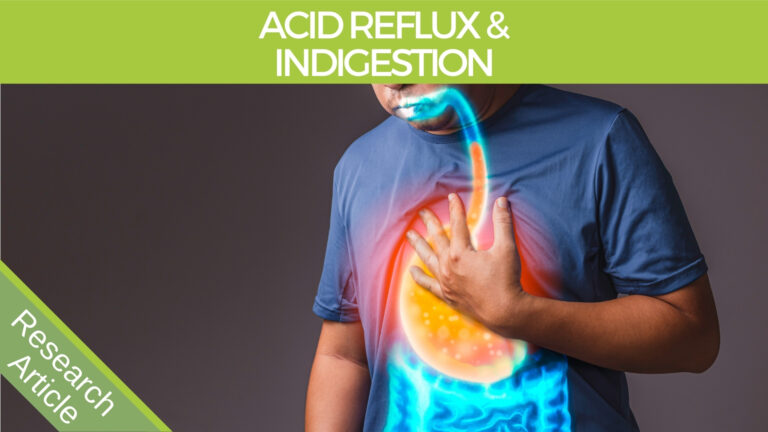
Indigestion & Heartburn
Just about everybody has suffered from indigestion at some point. The popular response to regular indigestion is to use antacids.
The Problem With Antacids
Antacids prescribed by your doctor, say in the form of omeprazole or Losec, severely lower hydrochloric acid (HCl) production in the stomach. This is called pharmacologically-induced hypochlorhydria (3)
However HCl is required to activate the enzyme pepsin, so now you cannot digest your protein properly…among other things….resulting in a distended bloated abdomen, increased constipation, and reduced nutrient absorption.
Low Hydrochloric Acid
Most indigestion and acid reflux are caused by insufficient levels of hydrochloric acid and digestive enzymes. The prescribed drugs mentioned above exacerbate this.
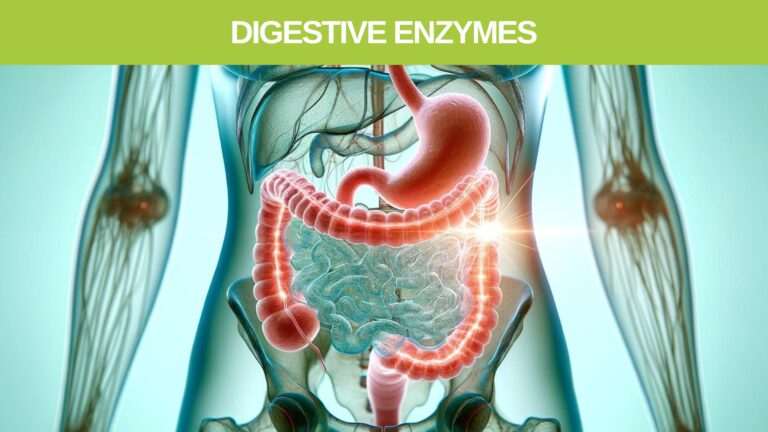
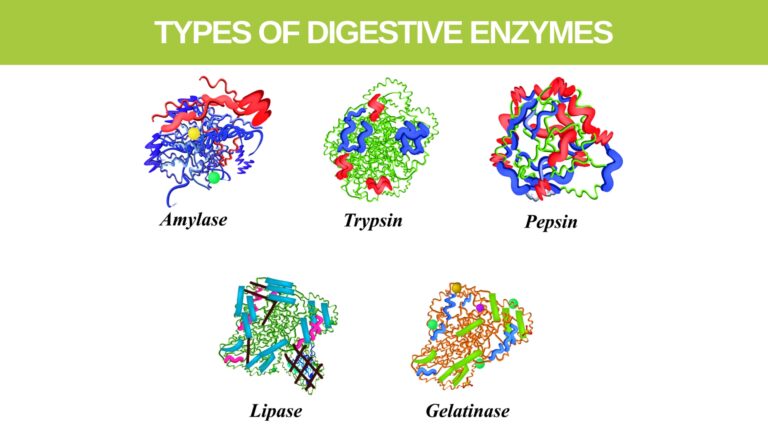
Enzymes Involved In Digestion
There are many enzymes involved in digestion. Some are made in your body and some aren’t. Let’s look at this in a little detail, just so you can see those enzymes you may need to get from your food.
Enzymes In The Mouth
Amylase in saliva begins the chemical breakdown of food (starches in particular) in conjunction with the mechanical action of teeth.
Enzymes In The Stomach
The two main enzymes in the stomach are pepsin and lipase.
- Pepsin is produced and secreted by the stomach and starts the digestion of proteins.
- Lipase, produced by the pancreas and secreted in the stomach, starts the digestion of fats and triglycerides (lipids).
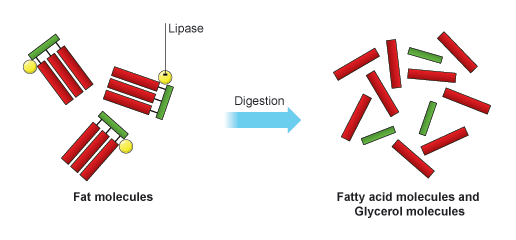
Enzymes In The Duodenum (Upper part of the small intestine)
Four pancreatic enzymes are secreted into this important part of the digestive tract:
- Lipase (breaks down fats as above)
- Amylase (breaks down starch)
- Trypsin and;
- Chymotrypsin which both break down proteins.
Note: While they are not enzymes Hydrochloric acid helps enzyme production and Bile from the liver help emulsify fat and water to make diegstion easier.
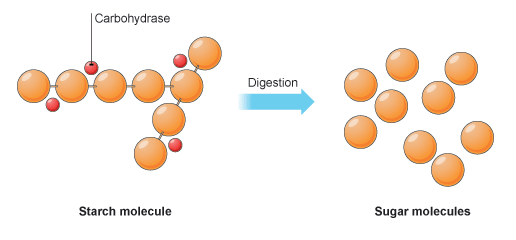
Enzymes In The Jejunum and Ileum (Lower part of the small intestine)
Further along, in the small intestine, is the major site for the digestion of carbohydrates by more enzymes called carbohydrases including:
- Maltase
- Lactase
- Sucrase
- Trehelase
These enzymes split the various sugar molecules of carbohydrates into simple sugars.
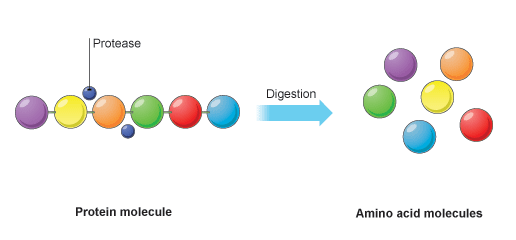
Secondary Protein Digesting Enzymes
Peptidase, also known as a protease, plays a critical role in the final steps of protein digestion, transforming peptides into amino acids, which are the building blocks of proteins essential for numerous bodily functions.
- Brush Border Enzymes: These peptidases are embedded in the microvilli lining the small intestine, effectively the intestinal wall. They are strategically positioned to contact the digested food directly as it passes through. Here, peptidases meticulously snip the short peptide chains into individual amino acids.
- Pancreatic Peptidases: The pancreas also secretes peptidases into the small intestine. These enzymes further assist in breaking down peptides into amino acids.
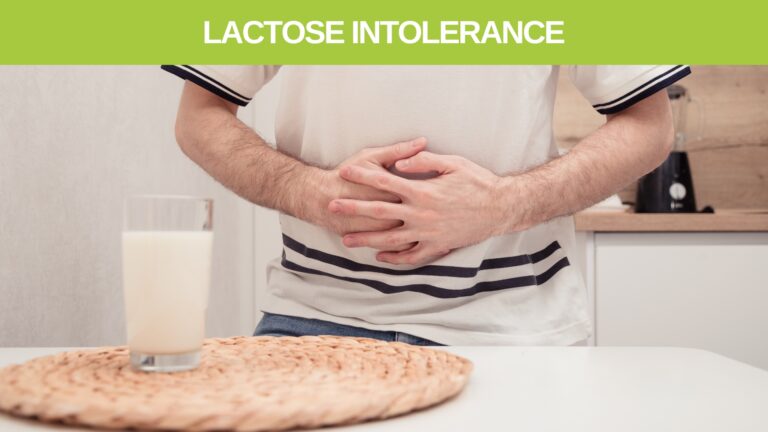
Lactose intolerance
Lactose intolerance results from a deficiency of the milk-digesting enzyme Lactase. Undigested lactose (from milk) then passes into the colon where fermentation produces hydrogen and short-chain fatty acids that can cause abdominal distention, pain and sometimes diarrhea. (2)
Milk is being used successfully for the supplementary feeding of children worldwide, and most lactose non-digesters can tolerate at least 240 ml of milk or the lactose equivalent in other products. (2)
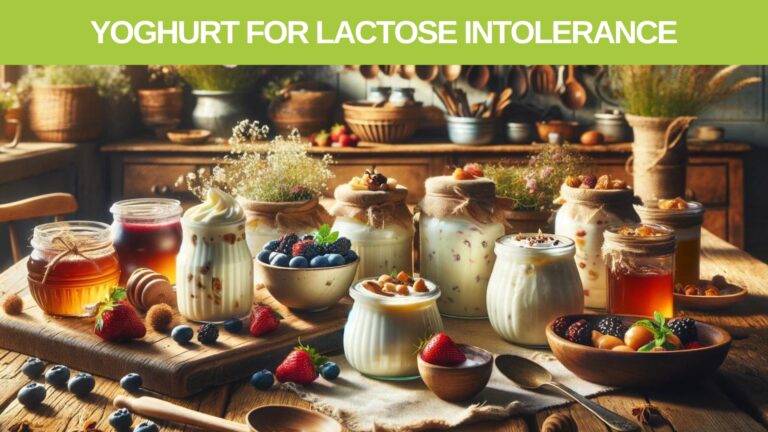
Yoghurt For Lactose Intolerance
It has been found that some yogurt and the introduction of enzymes can reduce lactose intolerance. (2)
Bacteria produce lactase
Yogurt contains live bacteria, such as L. delbrueckii subsp. bulgaricus and S. thermophilus, which produce lactase, aiding in the digestion of lactose.
These bacteria help break down some of the lactose in yogurt during its passage through the gut, slowing transit through the gut, which benefits lactose digestion.
The European Food Safety Authority has approved claims that yogurt improves lactose digestion based on studies. Consuming yogurt with live cultures may significantly enhance lactose digestion and reduce intolerance symptoms. (12)
Enzyme Deficiency In Lactose Intolerance
Sugar digesters
Lactase, sucrose, and maltase are present in the upper part of the small intestine. Deficiency of these enzymes leads to the incomplete digestion of the sugars. This can result in symptoms of bloating, flatulence, and diarrhea.
Protein digesters
The body manufactures trypsin and chymotrypsin, so you don’t always need these from your food. Deficiencies in proteolytic enzymes can result from disease or stress on the pancreas. Symptoms include abdominal discomfort, gas, indigestion, poor absorption of nutrients, and passing undigested food in the stool.
It has been shown that if you have a diet low in food enzymes or if you have had stomach bugs or irritations that have caused diarrhea then you could become deficient in these enzymes. (1)
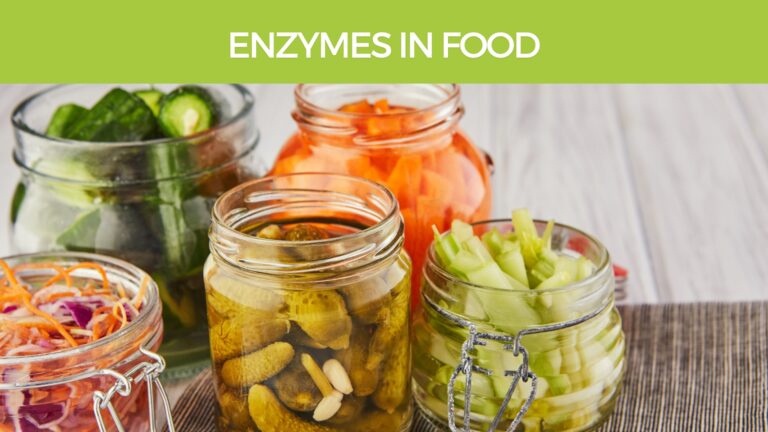
Diet, raw food and enzymes
Diets high in supermarket foods, or foods that have been processed in factories and no longer have living energy, have decreased enzyme content. The food processing industry alters food in such a way that it becomes less digestible and also reduces the bio-availability of nutrients. Over time your body can become depleted in its own ability to produce enough digestive enzymes to process this type of food. (5)
Food enzymes found in raw foods such as fresh fruits and vegetables play a crucial role in assisting digestion. However, their beneficial properties are compromised when foods undergo cooking, pasteurization, or any form of heat processing, as the heat alters the natural structure of these enzymes, rendering them inactive.
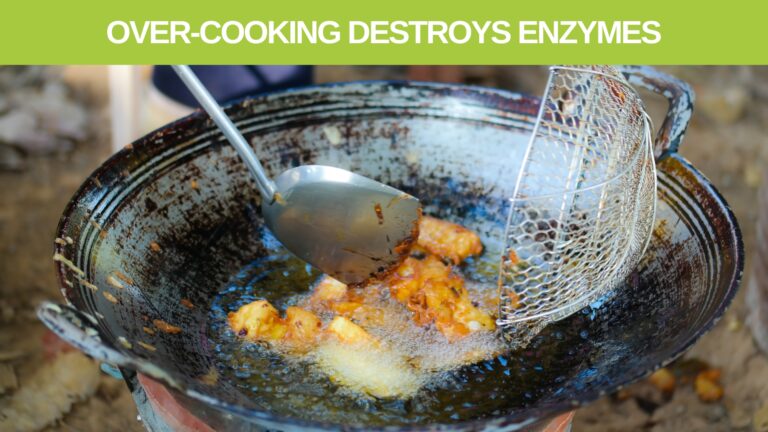
The impact of cooking on food nutrients and enzymes:
- Raw food enzymes aid digestion but are destroyed by heat, losing their catalytic ability.
- Evidence suggests raw foods may be healthier due to preserved nutrients and enzymes. Cooking can destroy nutrients, alter food structure and digestibility, and produce potentially harmful by-products.
- Cooking reduces the water-soluble, heat-sensitive nutrients like carotenoids, and the insoluble fiber in vegetables, affecting fecal transit time and the binding/excretion of carcinogens.
- The Maillard reaction, initiated by heat in foods containing reducing sugars and amino acids, destroys essential amino acids, makes proteins harder to digest, and creates pro-inflammatory compounds.
- Heating proteins can produce mutagenic compounds. Observational studies and anecdotal reports indicate potential health benefits of a raw food diet, including changes in chronic disease management.
Papaya and pineapple are two of the richest plant sources of food enzymes, as attested by their traditional use as natural “tenderizers” for meat. Read more about these below.
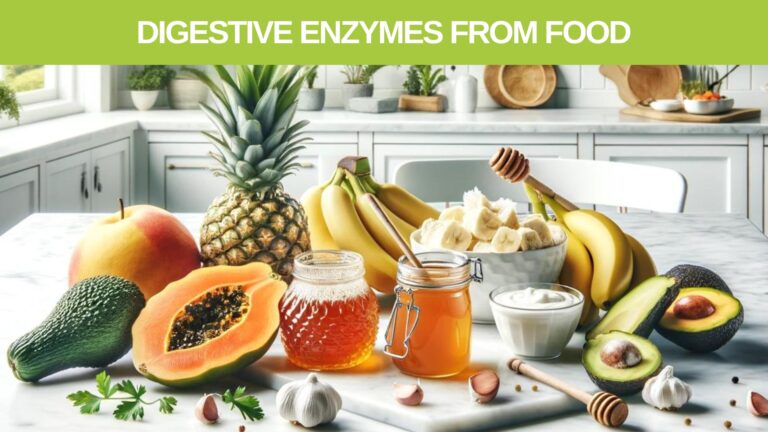
Foods Rich In Enzymes
Eating raw foods can be a great way to get natural digestive enzymes, which help break down food into nutrients that your body can absorb more easily. These enzymes include proteases for protein digestion, amylases for breaking down starches, and lipases for digesting fats.
Here are a few notable enzymes found in raw fruits and vegetables:
- Papain: Found in papayas, this enzyme helps break down proteins into smaller peptides and amino acids.
- BromelainTEXT HERE: Present in pineapples, bromelain also helps digest proteins and has anti-inflammatory properties.
- Amylase: Found in fruits like bananas and mangoes, amylase helps in the breakdown of starches into sugars.
- Lipase: While more commonly associated with animal sources, some plant foods, such as avocados, contain lipase, which assists in the digestion of fats.
- Cellulase: Produced by certain fruits, such as apples and pears, cellulase helps break down cellulose, a plant fiber, aiding in the overall digestion of cell walls in fruits and vegetables.
Here is a food list you can include in your diet to obtain these beneficial enzymes:
- Pineapple: Contains bromelain, a protease that assists with protein digestion and has anti-inflammatory properties. (13)
- Papaya: Rich in papain, another protease, which helps in breaking down proteins into amino acids. (14)
- Honey: Offers a wide range of enzymes including amylase for starch breakdown, making it one of the most enzyme-rich foods available. (15)
- Bananas: Provide amylase and glucosidase, enzymes that help convert carbohydrates into simple sugars. (16)
- Kefir: A fermented milk drink rich in proteases for protein digestion and also contains beneficial probiotics. (17)
- Avocado: A good source of lipase, which is essential for fat digestion. (18)
- Kimchi and other fermented foods: Contain protease, lipase, and amylase, produced during fermentation, which enhances their nutritional value and supports digestion. (19)
- Garlic: Contains alliinase, which may have beneficial effects on blood pressure. (20)
These foods not only support the digestive process but also contribute to overall gut health when included as part of a balanced diet. For those experiencing digestive enzyme deficiency, incorporating these foods can help alleviate symptoms such as bloating, gas, and indigestion.
However, it’s also important to consider individual dietary needs and restrictions.
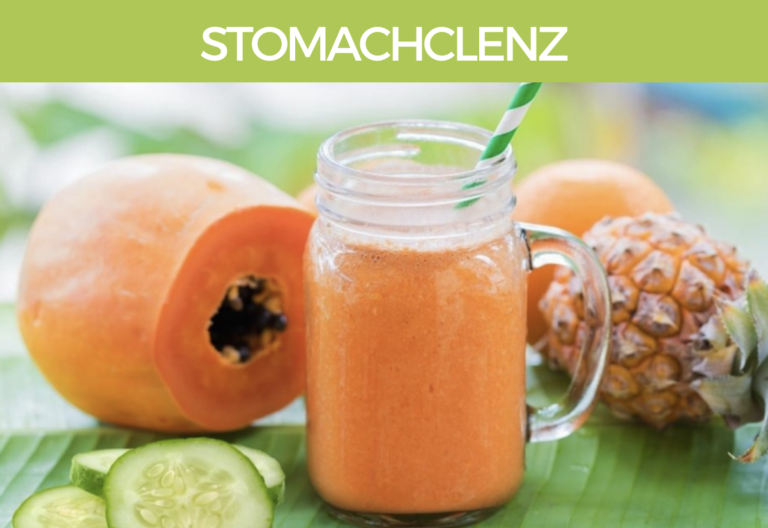
Digestive Enzyme Smoothie
This digestive Enzyme smoothie recipe is all about your stomach, which is the first major part of the digestive system. Your stomach has a lot of work cut out for it, including protein digestion. By eliminating the heavy proteins from your diet while detoxing you give your body a rest and reduce acidity. By providing protein-digesting enzymes, along with a nice alkalizing effect this smoothie is great for soothing the stomach and improving digestion. You can add a little ginger or fresh mint to pep it up and support digestion even more.

Supplementing with Enzymes
The domination of processed food in the modern human diet results in a lack of active ingested enzymes, and as a consequence a rapid depletion of their metabolic reserves. (9)
Since enzymes found in food are an important part of maintaining a healthy diet, it has become a common practice to supplement one’s diet with them.
Furthermore, proteases such as bromelain and papain are used as a valid therapeutic agent in both modern and natural medicine. The food rich in active enzymes, especially proteases, is applied as an important therapeutic and anti-aging diet component. (9)
It is generally known that enzymes present in fruits such as pineapple, papaya, kiwifruit, and figs (bromelain, papain, actinidin, and ficin, respectively) : are able to digest animal proteins, e.g., gelatin or other hard to digest (“slow”) proteins such as casein. (9)
There is clear evidence that the green kiwifruit:, and the enzyme actinidin itself, can enhance upper-tract digestion (gastric digestion in particular) of a variety of food proteins, which supports the use of kiwifruit as a dietary digestive aid. (9)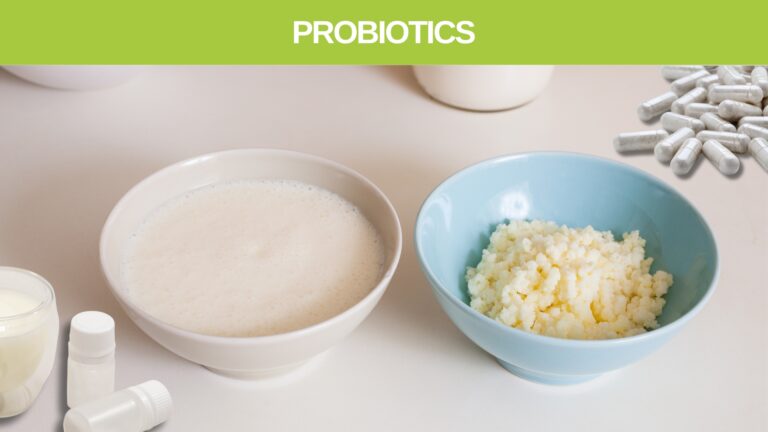
Positive bacteria and Enzymes
- Lactase, which breaks down lactose into glucose and galactose
- Proteases, which help in protein digestion.
PROPRIETARY BLEND
Click on the individual ingredient names for more information and research on how each herb works.
Peppermint (Mentha piperita) leaf: There is enough literature to demonstrate peppermints use for medicinal purposes, for the symptomatic treatment of digestive disorders. The pharmacological studies showed antispasmodic effects of the smooth muscle of the digestive tract, gall bladder stimulating activity, and relaxation of the oesophageal sphincter enabling the release of entrapped air, plus analgesic and anti-inflammatory action.
Fennel (Foeniculum vulgare) seed: In clinical studies fennel has been shown to decrease spasms of the intestine and to reduce crying time in 85.4% infant subjects observed.
Pineapple (Ananas comosus) extract (Bromelain): Bromelain aids digestion by enhancing the effects of the digestive enzymes trypsin and pepsin. It can also help to prevent heartburn and ease diarrhea if either is caused by a deficiency of digestive enzymes. Plant enzymes (such as Papain and Bromelain) have been extensively investigated as meat tenderizers.
Papaya (Carica papaya) extract: Papain, the active principle in papaya that exerts the ulcer-protective effect.
Kiwifruit (Actinidia chinensis) whole fruit: In one study dietary actinidin from Kiwifruit increased gastric protein digestion and accelerated the gastric emptying for several dietary protein sources.
Ginger (Zingiber officinale) rhizome: The mechanism underlying ginger’s anti-emetic activity is not clearly understood, but the aromatic, spasmolytic, carminative, and absorbent properties of ginger suggest it has direct effects on the gastrointestinal tract. Five double-blind studies have been performed that demonstrate a positive effect of ginger on motion sickness.
Cayenne (Capsicum annuum) fruit: The active component in cayenne (Capsaicin) inhibits acid secretion, stimulates alkali and mucus secretion and particularly gastric mucosal blood flow which helps in prevention and healing of gastric ulcers.
Licorice (Glycyrrhiza glabra) root: The findings of one randomized double-blind, placebo-controlled, clinical trial on the root extract of licorice revealed a significant decrease in symptoms scores in almost all individual symptoms and found to be superior to placebo group in the management of functional dyspepsia (indigestion).
How to take Digezaid
You can take 2 to 5 Capsules Twice Daily depending on your goals.
It is best to start with 1-2 capsules with your meals to start with. This will allow you to find the dose that works for you. Increase the dose by one capsule per meal each day until you find the dose that works for you.
It is important to look at your diet to identify any foods that may be causing a problem and also to find foods that may be helpful in themselves.
See some specific dietary recommendations for various intestinal irritations on these articles below.
- Alkaline Diet Benefits
- Vegetarian Diet Benefits
- Acid Reflux
- Bloating and gas
- Understanding Digestive Enzymes in Food
Other Directions: Digezaid is recommended along with regular exercise and a healthy diet.
Conclusion
Our digestive system is heavily dependent on enzymes and the over-consumption of processed food can be responsible for enzyme deficiency.
Papain and bromelain are the respective names for the protein-digesting enzymes found in fruits. These enzymes are included in the Herbal DETOX and BodiTune DETOX ‘n SLIM products to assist in the digestive process.
By improving digestion and absorption of nutrients during a colon cleansing program the healing power of the body is greatly enhanced. Along with the focus on more fruits and vegetables and particularly raw food, the benefits can be astounding.
Most people report that digestion is vastly improved and many symptoms such as constipation, bloating & gas, IBS, indigestion, and acid reflux are alleviated.
Visit our reviews page to see what people are saying
Brett Elliott ®

